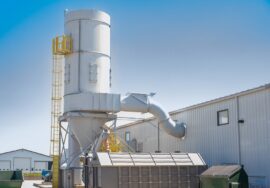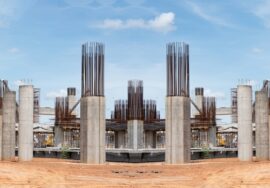
Environmental Compliance in Construction Industry
Environmental Compliance in Construction Projects
As the construction sector continues to expand, it faces increasing pressure to minimize environmental damage and operate responsibly. Ensuring environmental compliance in construction has become a top priority for developers, contractors, and policymakers aiming to balance infrastructure growth with ecological preservation.
Proper environmental compliance not only helps companies follow the law but also strengthens their commitment to sustainability, community welfare, and long-term business growth.
What Is Environmental Compliance in Construction?
Environmental compliance in construction refers to following laws, regulations, and standards designed to protect the environment during the planning, construction, and demolition phases. It includes managing air and water pollution, waste disposal, noise control, and resource conservation.
Construction companies must adhere to various environmental regulations, including those set by the Central Pollution Control Board (CPCB) and State Pollution Control Boards (SPCBs) in India, to prevent environmental degradation and promote sustainable building practices.
Importance of Environmental Compliance
Adhering to environmental compliance in construction is essential for several reasons. It ensures the protection of natural ecosystems, safeguards public health, and helps companies maintain a positive image.
Here’s why it’s crucial:
-
Legal Obligation: Ensures projects meet national environmental laws and avoid penalties.
-
Sustainability: Promotes resource efficiency and pollution control.
-
Community Well-being: Reduces air, water, and noise pollution affecting local communities.
-
Reputation Management: Builds trust among clients and regulators.
-
Financial Stability: Prevents costly shutdowns and fines due to non-compliance.
Through strict environmental compliance, construction firms contribute to cleaner, safer, and more resilient cities.
Key Areas of Environmental Compliance
1. Air Pollution Control
Construction sites often produce dust, smoke, and emissions. Measures such as low-emission construction equipment, dust suppression systems, and covering materials help reduce air pollution.
2. Water Pollution Prevention
Managing runoff through stormwater management and erosion control prevents contamination of nearby water bodies.
3. Waste Management
Proper hazardous waste disposal and recycling reduce the environmental footprint of construction projects. Segregating and reusing materials also align with green construction practices.
4. Noise Pollution Management
Installing noise barriers and using sound-reducing machinery ensures compliance with CPCB noise standards.
5. Resource Efficiency
Using energy-efficient systems, renewable energy, and eco-friendly materials improves sustainability and supports environmental compliance goals.

Environmental Regulations for Construction in India
India has a well-defined legal framework to enforce environmental in construction. Key laws and guidelines include:
-
Environment (Protection) Act, 1986
-
Air (Prevention and Control of Pollution) Act, 1981
-
Water (Prevention and Control of Pollution) Act, 1974
-
Noise Pollution (Regulation and Control) Rules, 2000
-
Construction and Demolition Waste Management Rules, 2016
The CPCB and Ministry of Environment, Forest and Climate Change (MoEFCC) regulate pollution levels, waste disposal, and sustainable building standards. Large projects often require Environmental Impact Assessment (EIA) clearance before construction begins.
Benefits of Achieving Environmental Compliance
Implementing environmental in construction offers multiple long-term benefits:
-
Legal Protection: Avoids litigation and fines.
-
Improved Efficiency: Optimizes energy and resource use.
-
Market Advantage: Attracts environmentally conscious investors and clients.
-
Sustainable Reputation: Builds a brand recognized for responsible practices.
-
Employee Morale: Encourages a culture of safety and accountability.
Projects that prioritize environmental compliance often achieve certifications like LEED or GRIHA, further enhancing their sustainability credentials.
Challenges in Maintaining Environmental Compliance
Despite its importance, environmental compliance in construction faces challenges such as limited awareness, cost concerns, and weak enforcement. Smaller contractors may lack the technical expertise or equipment required to meet environmental standards.
However, integrating clean construction technology, smart building monitoring, and regular site audits can simplify compliance while improving project performance.
Partner with AMS India for Environmental Compliance Solutions
At AMS India, we specialize in sustainable construction management and environmental services. Our team assists in environmental audits, pollution control, waste management, and legal documentation to ensure your projects meet CPCB and MoEFCC guidelines.
We help construction firms integrate eco-friendly design, energy efficiency, and resource optimization into their workflows for better compliance and sustainability.
Conclusion
Ensuring environmental in construction is not just a legal requirement — it’s a moral responsibility and a strategic advantage. By adhering to environmental regulations, companies can protect natural resources, reduce pollution, and enhance their long-term profitability.
Through collaboration with environmental experts, modern technologies, and sustainable practices, the construction industry can lead India toward a greener, cleaner, and more compliant future.
Read more related articles to enhance your knowledge and make informed decisions
Cost-Effective Modular Construction: Fast, and Sustainable Building Solutions
Smart Modular Buildings: Innovative, Efficient, and Sustainable Construction








